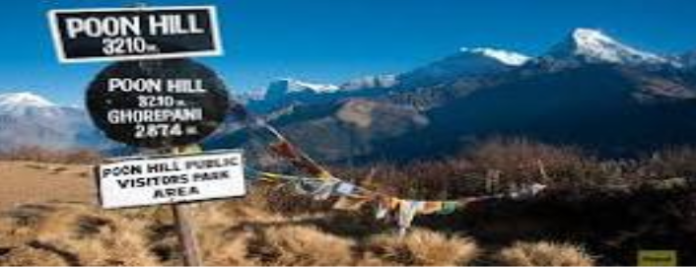The Ghorepani Poon Hill Trek is one of the most popular short treks in Nepal, offering a perfect introduction to the Annapurna region. Known for its spectacular mountain views, charming villages, and diverse landscapes, this trek is ideal for those seeking a less strenuous but rewarding Himalayan adventure. The trek takes travelers through picturesque rhododendron forests, terraced fields, and traditional Gurung villages, culminating in a sunrise view from Poon Hill, which offers panoramic vistas of some of the most famous peaks in the Annapurna and Dhaulagiri ranges.
Trek Overview
The Ghorepani Poon Hill Trek typically lasts 4 to 5 days and is considered moderate in difficulty, making it accessible for trekkers of various fitness levels. The trek starts from Nayapul, a small town that can be reached by a scenic drive from Pokhara, and gradually ascends through charming villages such as Tikhedhunga, Ulleri, Ghorepani, and Tadapani. These villages offer a glimpse into the rich cultural heritage of the region, predominantly inhabited by the Gurung and Magar communities.
The highlight of the trek is reaching Poon Hill (3,210 meters), where trekkers can witness one of the most stunning sunrise views in the world. The panoramic view from Poon Hill includes towering peaks such as Annapurna I (8,091 meters), Annapurna South (7,219 meters), Machapuchare (6,993 meters), Dhaulagiri (8,167 meters), and many others. The sight of these majestic mountains bathed in the soft glow of the morning sun is a memorable experience for trekkers.
Scenic Beauty and Landscape
The Poonhill Trekking is renowned for its diverse landscapes, which change dramatically as trekkers ascend. The journey begins in the subtropical lowlands, where the trail winds through terraced fields and small villages surrounded by lush green forests. As trekkers gain elevation, the landscape transforms into temperate forests of oak, rhododendron, and pine. In spring, the forests are alive with vibrant colors as rhododendron flowers bloom in shades of red, pink, and white, creating a magical atmosphere.
The trek also offers glimpses of Nepal’s rich biodiversity, with opportunities to spot various species of birds and wildlife. In the higher altitudes, trekkers can observe mountain goats, langur monkeys, and even the elusive snow leopard in the more remote areas.
Cultural Insights
The Ghorepani Poon Hill Trek provides trekkers with a chance to experience the traditional lifestyle and culture of the Gurung and Magar communities. The villages along the route are known for their warm hospitality, and trekkers can interact with the locals to learn about their customs, traditions, and way of life. The trekking lodges, known as teahouses, offer comfortable accommodations and authentic local meals, allowing trekkers to immerse themselves in the culture while enjoying the beauty of the surrounding nature.
In addition to the natural beauty, the trek also passes through religious sites such as monasteries and stupas, where trekkers can learn about the region’s Buddhist heritage and observe traditional practices.
Best Time to Trek
The best time to embark on the Ghorepani Poon Hill Trek is during the spring (March to May) and autumn (September to November) seasons. During these months, the weather is generally clear, and the skies are bright, offering the best views of the surrounding peaks. Spring is especially beautiful, as the rhododendron forests are in full bloom, adding to the trek’s colorful scenery.
Conclusion
The Ghorepani Poon Hill Trek offers a perfect blend of natural beauty, cultural experiences, and stunning mountain vistas. With its relatively short duration and moderate difficulty level, it is an ideal trek for beginners, families, and those who are short on time but still want to experience the magnificence of the Himalayas. Whether you’re a seasoned trekker or a first-time visitor to Nepal, the Ghorepani Poon Hill Trek promises an unforgettable journey into the heart of the Annapurna region.










